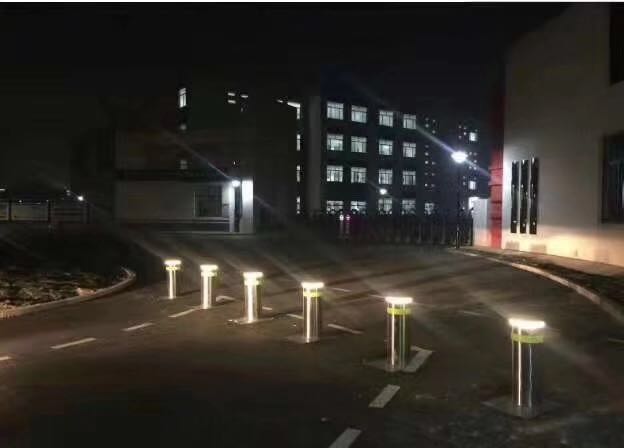What are the applications of the automatic lifting column in the vehicle access management system? The following is a brief introduction by the technicians of the Yuming Lifting Column Roadblock Company. I hope that our introduction can help you better.
1. The cylinder is lowered: after the legal authorization is verified, after the control unit receives the switch signal, the lifting column is driven down, parallel to the road surface, and the vehicle is released. The authorization method can be various methods such as buttons and access control.
2. Cylinder rise: After the legal vehicle passes, the control unit receives the switch signal and drives the lifting column to fully rise. The signal can be given in various ways such as a remote controller, a button, and an access control.
3. Protection: When there is a vehicle staying above the lifting column, the column does not rise. The priority of the protection mode is higher than the priority of the rising command; however, the protection of the passing vehicle cannot be achieved through the protection system such as infrared and ground sensing.
4. Power-off release: After power-off, the channel can be released by lowering the lift column by remote control. The whole system can control the entry and exit of vehicles with normal width passages, and is more suitable for the control of vehicles entering and leaving the wide gate passage. At present, if there is more than 6 meters of passage, there is no good product for the control of vehicle access and entry, and the buried coil type long-distance card reading system is very suitable for wide-channel vehicle access management. When it is not controlled, it is flush with the ground, there is no blockage, there is no plug-in reading head, no camera, and only the lifting column is blocked during the control, which is suitable for strict control.
5. The cost of the automatic lifting column is much higher than that of the gate. In particular, the imported columns are in the form of ten thousand yuan. They are mainly used to control the passage of road vehicles. They are specially designed to prevent non-permitted vehicles from entering the sensitive areas. High practicality, reliability and safety. It is much faster than the telescopic door, and it is much wider than the channel controlled by the gate. The effect can be said to have its unique performance advantage.
Thiocyanate
Thiocyanate (also known as rhodanide) is the anion [SCN]−. It is the conjugate base of thiocyanic acid. Common derivatives include the colourless salts potassium thiocyanate and sodium thiocyanate. Organic compounds containing the functional group SCN are also called thiocyanates. Mercury(II) thiocyanate was formerly used in pyrotechnics.
Thiocyanate is analogous to the cyanate ion, [OCN]−, wherein oxygen is replaced by sulfur. [SCN]− is one of the pseudohalides, due to the similarity of its reactions to that of halide ions. Thiocyanate used to be known as rhodanide (from a Greek word for rose) because of the red colour of its complexes with iron. Thiocyanate is produced by the reaction of elemental sulfur or thiosulfate with cyanide
Thiocyanate[4] is known to be an important part in the biosynthesis of hypothiocyanite by a lactoperoxidase.[5][6][7] Thus the complete absence of thiocyanate[8] or reduced thiocyanate[9] in the human body, (e.g., cystic fibrosis) is damaging to the human host defense system.[10][11]
Thiocyanate is a potent competitive inhibitor of the thyroid sodium-iodide symporter.[12] Iodine is an essential component of thyroxine. Since thiocyanates will decrease iodide transport into the thyroid follicular cell, they will decrease the amount of thyroxine produced by the thyroid gland. As such, foodstuffs containing thiocyanate are best avoided by Iodide deficient hypothyroid patients.[13]
In the early 20th century, thiocyanate was used in the treatment of hypertension, but it is no longer used because of associated toxicity.[14] Sodium nitroprusside, a metabolite of which is thiocyanate, is however still used for the treatment of a hypertensive emergency. Rhodanese catalyzes the reaction of sodium nitroprusside with thiosulfate to form the metabolite thiocyanate
Our main Thiocyanates are Sodium Thiocyanate, Potassium Thiocyanate, Ammonium Thiocyanate.
